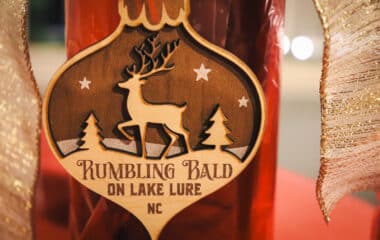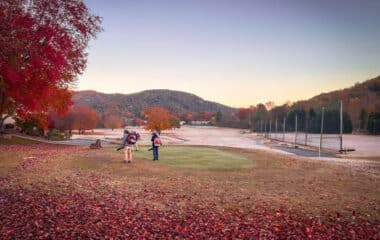As you’re pulling out all your red, white, and blue patriotic gear for this 4th of July, have you ever stopped to consider the other Independence Day traditions we observe? A “typical All-American 4th of July” usually entails a cookout with plenty of hamburgers, hot dogs, and beer (domestic of course), red, white, and blue on everything, and the ultimate cherry on top, a fireworks display. But why fireworks specifically on the fourth? Fireworks are used at many other celebrations on numerous days of the year, but yet, many people will travel miles and miles to get to a firework display on the 4th of July. Why does the perfect 4th of July HAVE to include fireworks? Where did that tradition even get started?
When were Fireworks created?
The origins of the first firecracker are still argued over by historians, but most trace their origin to China in 800 A.D. These fireworks looked very different, as one would imagine, than contemporary creations, with simple hallowed out bamboo stalks filled with crude gunpowder. These stalks were placed in a fire that would then explode with a loud bang in order to ward off evil spirits, as the Chinese believed. These stalks eventually evolved to paper tubes and large open fires were replaced by fuses made from tissue paper.
By the 10th century, the Chinese had expanded on their original firecracker by elevating their status from religious ritual to war tactic. The Chinese would attach firecrackers to arrows to be shot at their enemies. Over the next many years, these firecracker arrows were developed into rockets that could be fired without an arrow (for you Disney fans, think of the mountain battle scene in Mulan). This same concept is the method still used today in our modern-day firework shows.
Where did Firework displays first start?
Although fireworks reached Europe long before, by the 15th century, fireworks had become widely used in Europe at religious festivals and by royalty for public entertainment. The illumination off of grand castles by fireworks entranced its rulers and their subjects alike. The first royal display has been linked to Henry VII’s wedding day in 1486. This led to a subsequent royal’s competition as other rulers sought to outperform the other, such as England’s James II on his coronation day (1685), where the fire master received knighthood for his display or Russia’s Czar Peter the Great (1690) on the five-hour demonstration for the birth of his first son. Some historians even cite that court jesters used fireworks in their routines in Medieval England and the famous Shakespeare also incorporated firecracker pyrotechnics into his productions. The Italians began to manufacture fireworks as the craze for these displays became in more demand. By the 1830’s, the Italians were beginning to develop colors for their fireworks, formerly all fireworks had been orange only.
When did Fireworks become “American”?
As America came into fruition, settlers carried this same love of firework display from England to the New World. Supposedly, Captain John Smith (Disney’s Pocahontas anyone?) set off the first display documented on American soil in Jamestown, Virginia in 1608. Some years later, on the first anniversary of the adoption of the Declaration of Independence (July 4, 1777) fireworks were a key part of Independence Day. These first Independence Day celebration activities seemed almost willed into existence by John Adams, as he predicted to his wife “it ought to be solemnized with pomp and parade…bonfires and illuminations (aka fireworks) …from one end of this continent to the other, from this time forward forevermore.” This was certainly the case with the first Independence Day celebrations including musket fire, cannon fire, large parades and parties, and firework displays. While some of these original demonstrations have gone away over time, fireworks remain a tradition that has been repeated on the 4th of July ever since.
 How does a Firework even work?
How does a Firework even work?
A modern-day firework consists of two main things inside an aerial shell: gunpowder and dozens of small pods (often referred to as stars). Each pod is only about an inch or so wide containing fuel and oxidizing chemicals that result in particular colors. The shell has a fuse that is lit to initially release the firework into the air and ignite the gunpowder. When a firework goes off with all its dots and colors, each dot in a display coincides to a single pod. The light and color we see in the sky comes from the colorants in the pod being heated and cooled off as they lose excess energy.
Why do Americans relate Fireworks to the Fourth?
Fireworks are used beyond just Independence Day of course, at events such as sporting competitions, inaugurations, international holidays, etc. – all of which have one unifying common element: a joint gathering with the intent to celebrate. Fireworks have always been a very loud and proud form of demonstration, but the introduction of color, design, and production have transformed them into a type of art form. However, fireworks have become almost synonymous with the 4th of July. Other than being a part of the annual celebrations since Independence Day’s inception, fireworks also keep the character of the same riotous, loud, and triumphant sounds associated with the original canons and gunpowder. Fireworks and the Fourth seemingly go hand-in-hand for Americans, because they represent the symbol of celebration, promote the tradition of gathering, and still honor that original historic feeling of awe and entrancement.
We promote that same notion of celebration at Rumbling Bald with our annual 4th of July Independence Day Celebration. Enjoy the peak of summer vacation in the Blue Ridge Mountains on the Fourth and experience our spectacular fireworks show. While certain alterations have had to be made this year due to the worldwide impact of COVID-19, we still plan to offer you the highlights that make up a fantastic 4th of July celebration. The whole family can enjoy being tucked away in your own rental while enjoying all the amenities that the resort has to offer. Saturday, July 4th will include plenty of food options, our annual golf cart parade, music, and of course, fireworks. Visit https://rumblingbald.com/event/july-4th-celebration for the full schedule and a more comprehensive look at our Rumbling Bald July 4th.







